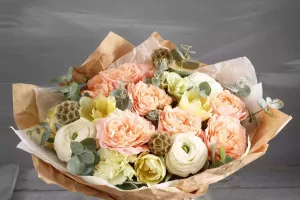Peony is a very popular flower in our life, so many people are willing to plant peony at home, but many people do not master the method of planting when planting peony. Here's how to grow peonies.
The planting of peonies is not demanding on soil. Generally, a well-drained, fertile, loose sandy soil can be used. The formula of the soil is: humus soil, pastoral soil, and fine river sand. Before planting, it is recommended to use after disinfection with thiophanate-methyl solution.
Peony is a plant that requires a lot of water. After the planting is completed, be sure to water enough, and then water every five to seven days. Of course, if the specific watering is for a few days, it also needs to be determined according to the condition of the soil, as long as the soil will not be dry. In the process of growing peony flowers, we must ensure that there is sufficient moisture in the soil. When peony flowers are in the flowering stage, the demand for water is relatively large, and the amount is also large. If watering is not carried out in time at this time, it may end up with the phenomenon of falling flowers due to insufficient water.
Peony flowers are very fat-loving, so we need to regularly replace new potting soil for peony flowers every spring. On the one hand, it gives it more space for growth, and on the other hand, the new soil has sufficient nutrients, which can make the peony grow better. Also, one month before the flowering period, phosphorus and potassium fertilizers should be supplemented every ten days, so that better flower buds and flower buds can be differentiated. After the flowering period, compound fertilizers should be used.
Prune branches regularly. The vitality of peony is very strong. Every spring, it will grow a lot of buds. If you let them grow, these new buds will take away the nutrients that were originally intended to bloom. Therefore, it is necessary to cut off some of these new shoots. When we see some shoots that are more disorganized, we can cut them off. If there are some branches that are beneficial to the overall appearance of the plant, we can keep them.
In winter, the most important thing to pay attention to is to keep warm, so that the branches cannot be frostbitten too much. Small seedlings need to take measures to keep warm, while large seedlings do not need to take heat preservation measures because of the developed root system. However, if the climate temperature is too low, it is also necessary to take measures to keep warm.


